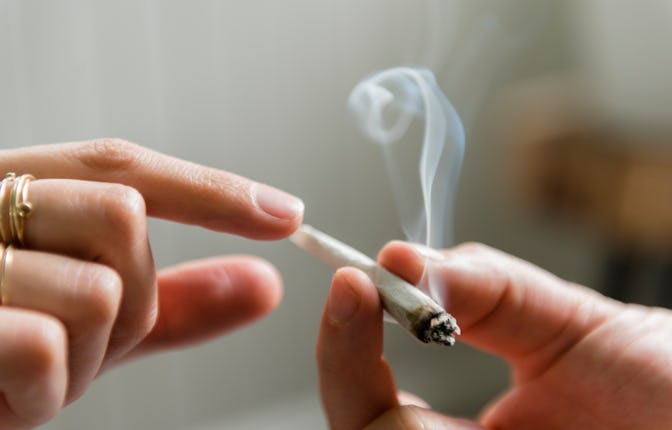Should I be afraid of fentanyl-laced weed?
Law enforcement have created a very convenient narrative that reinforces the war on drugs.

Cops have been sounding the alarm about weed laced with fentanyl — an opioid up to 50 times more powerful than heroin, per the CDC — for years. A November 18 public health alert from Connecticut health and law enforcement officials about a “lab confirmed case” seemed to validate this concern. But the evidence is flimsy, according to VICE News. Still, it allows police to justify waging the war on drugs, even as cannabis legalization, which most Americans support, sweeps the country. How convenient.
It’s downright irresponsible to freak people out with the possibility of fentanyl-laced weed with few details to substantiate it, and without giving equal weight to other possibilities that have yet to be ruled out. But that’s exactly what the public health alert did.
Other experts explained to the outlet that fentanyl-laced weed is more likely the result of accidental contamination than some concerted fentanyl-lacing operation. In fact, Robert Lawlor, a drug intelligence officer with the Connecticut Overdose Response Strategy team that released the public health alert, told VICE News that the risk of widespread contamination with fentanyl is “probably not that great” and that reports of weed intentionally laced with fentanyl are an “urban legend.” But the extent of the problem remains unknown because law enforcement don’t confiscate and test weed as often as they do other drugs.
The public health alert listed 39 cases in which “only marijuana use was reported but naloxone [a medication that reverses opioid overdoses] was required,” per VICE News. Yet Lawlor told the outlet that these reports were drawn from unconfirmed “anecdotal” observations from medical personnel.
There are other gaps in the alert. For starters, the fact that first responders administered naloxone doesn’t necessarily mean the recipients needed it for opioid overdoses, Kim Sue, addiction physician-anthropologist at Yale University and medical director for the National Harm Reduction Coalition, told VICE News. Indeed, naloxone is used even on people who’ve passed out from drinking, she explained. She added that some of the 39 cases might have also taken fentanyl earlier, but didn’t want to tell police to avoid arrest.
The alert didn’t explain how the samples were tested, either, though Lawlor told VICE News that officials used a method called gas chromatography-mass spectrometry. But Nabarun Dasgupta, a senior scientist at the Gillings School of Global Public Health at the University of North Carolina, pointed out that the alert didn’t specify the amount of fentanyl detected in the “lab confirmed case.” Dasgupta hasn’t encountered a credible case of weed intentionally laced with fentanyl, but believes accidental contamination might’ve occurred.
All of these possibilities could’ve explained the 39 cases in Connecticut, yet the public health alert made no mention of them. Implying that fentanyl-laced marijuana is infiltrating the streets without some disclaimer about other plausible, less terrifying explanations for what we’re seeing amounts to little more than fear mongering.
But police have a track record of disseminating misinformation about drugs, especially fentanyl, VICE News reported. Earlier this month, Houston Police Chief Troy Finner clarified that a security guard at the Astroworld Festival hadn’t been pricked in the neck with a potential opioid-containing substance, as had been originally claimed. The media has been complicit in this alarm, VICE News noted, citing a New York Times story that described a dealer spraying liquid fentanyl on baking sheets of weed, with zero context.
Remember, cops “are invested in upholding narratives that drugs are lethal and dangerous and we need to crack down and we need to justify more enforcement,” Sheila Vakharia, deputy director, department of research and academic engagement for the Drug Policy Alliance, told VICE News — all the more reason to take their claims about fentanyl-laced weed with a heaping helping of skepticism.
As with any information, it’s crucial to consider who it’s coming from, and who stands to benefit if we believe it. Like Sue said, we need to instead turn our attention to the CDC’s recent estimate that more than 100,000 Americans died of overdoses in a 12-month period — actual, confirmed overdose deaths. We need to focus on how to tackle this very real danger, not a purported one that may very well just be a myth.